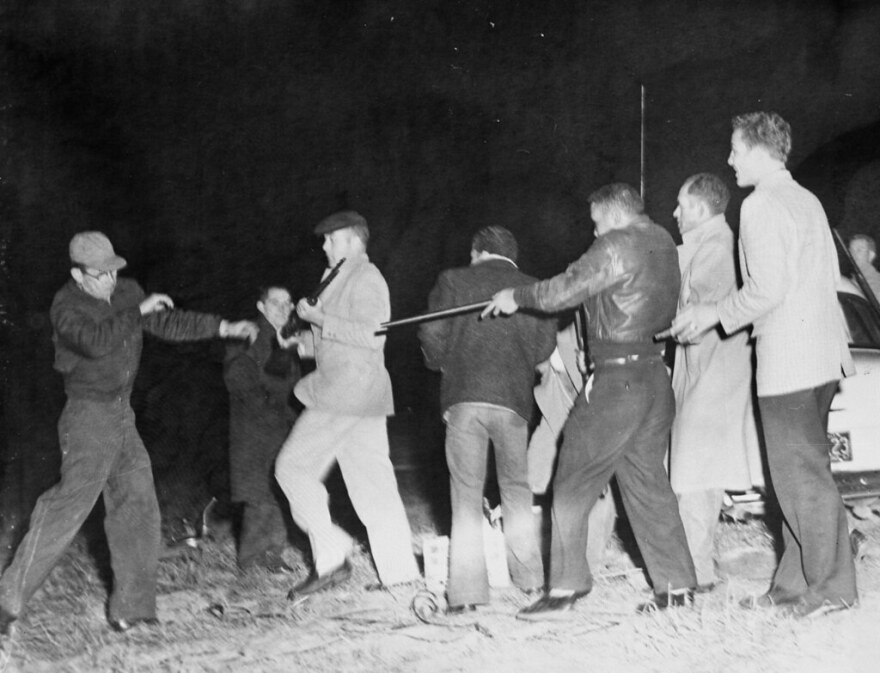History is a big deal for William Cordova.
The artist is known for hisdigging deep into the nuances of historical events to inform his work. So an extended visit to North Carolina for a new residency program at Charlotte’sMcColl Center was just the thing he needed. In fact, he’s been meaning to head this way for six years. Now he’s got the time and a local project underway.
“I needed to go to UNC-Chapel Hill and Duke University and some other colleges and universities and look through a lot of historical archives of civil disobedience in North Carolina and utilize some of that material to shape my project into visual pieces,” Cordova said. “Most of them will be abstract form or geometric.”
The McColl Center has been offering residencies since it opened to the public in the late 1990s, hosting more than 400 artists over the years. But the newCatalyst residency program is different: It’s meant to bring in artists with national profiles, and it has a more flexible schedule.
“Catalyst really is this opportunity to think in an expanded way about how we serve artists to give them time and to structure a program that opens up our resources in a different way,” said Jonell Logan, the McColl Center’s vice president and creative director.
It’s not just about having a well-known artist creating at the center, either. Cordova and those who follow him will work alongside the other artists-in-residence and those participating in McColl’s studio programs.
“Building a creative community is important for Catalyst because they bring this other level of experience and expertise and connections,” Logan said. “And we want to ensure that they share that with artists that are here in Charlotte.”

Cordova certainly fits the bill of an artist in a more advanced stage of his career. He’s based in Miami, New York and Lima, Peru, and his work has been getting accolades for years. His art has been featured in the Guggenheim, the Whitney Museum of American Art and Cuba’s La Casa de las Americas, to name a few. And he’s done prominent residencies in New York, Houston and Berlin.
He’s well-known for incorporating Afro-Peruvian culture and pop culture into his works, which include installations, sculptures and drawings. In Charlotte, he’s been busy snapping photos, too. And in a city that’s known for embracing the new, Cordova isn’t keeping his lens trained on the skyline.
“I’ve been walking around documenting the landscape — what people write on the walls or sometimes what people have etched in texts going back to the ’50s and ’60s on the sidewalks,” Cordova said. “Those impressions are really very telling sometimes.”
Cordova says people often write not only their names but dates. And those markings can reference important events — sometimes to the people who inscribed them, like relationships, and sometimes to the broader themes of the time, like oppression.
“They’re all visible,” Cordova said. “It’s just that most people don’t look down when they walk. Most people drive. So I think printing them and sharing them with the public — if people actually see these photographs, it’s going to alter the way that they think about the sidewalk. So next time they go out on the street, they’re going to be looking down.”

Stories of civil disobedience, people standing up for justice or struggling against oppression speak to him, and he’s especially interested in the Battle of Hayes Pond. That’s when, in 1958, armed members of theLumbee tribe confronted the KKK at a Robeson County rally, forcing the white supremacists to flee into the night.
“I’m going to be going to the location where the Battle of Hayes Pond was,” Cordova said. “What I’m going to do is try and see if I can sample some of the dirt in the area, maybe some of the plants, and transform that into inks and paints do silkscreens and draw with it. Also if there are bottles there, I might try to melt them and do certain lenses or shapes that are related to the event.”
He’s also interested in learning more about theMalcolm X Liberation University in Durham and Greensboro during the late 1960s and early 1970s and the history of theBlack Panther Party in the state, especiallya short-lived center in High Point.
Cordova and the other artists-in-residence —Rachel Eng,Ọmọlará Williams McCallister,André Leon Gray andIrisol Gonzales — have already been working together. He’s been able to share his advice with other artists about techniques, getting in touch with galleries and bolstering their higher education careers.
There’s an exhibition of Cordova’s art, “rumi maki. infinite harmonics of southern alchemy,” on display at McColl now, along with the work of the current slate of artists-in-residence. Their exhibition is called “Public Questions/Private Conduct.”
What’s more: People in Charlotte are invited to not only see the work in the gallery space but meet the artists — and even see the creation process.
“We have a signal,” Logan said. “If the artist’s studio door is open, they’re welcome for a visit.”
Cordova’s residency ends April 9. The other artists’ residencies end on April 19. You can learn about the McColl Center’scurrent artists-in-residence and exhibits here.



